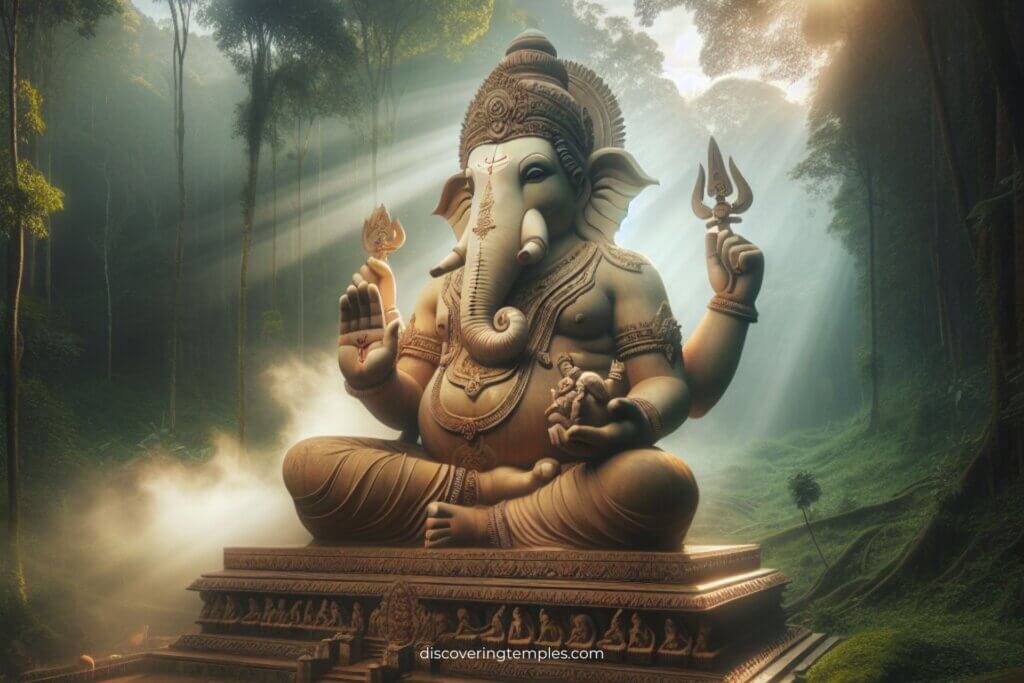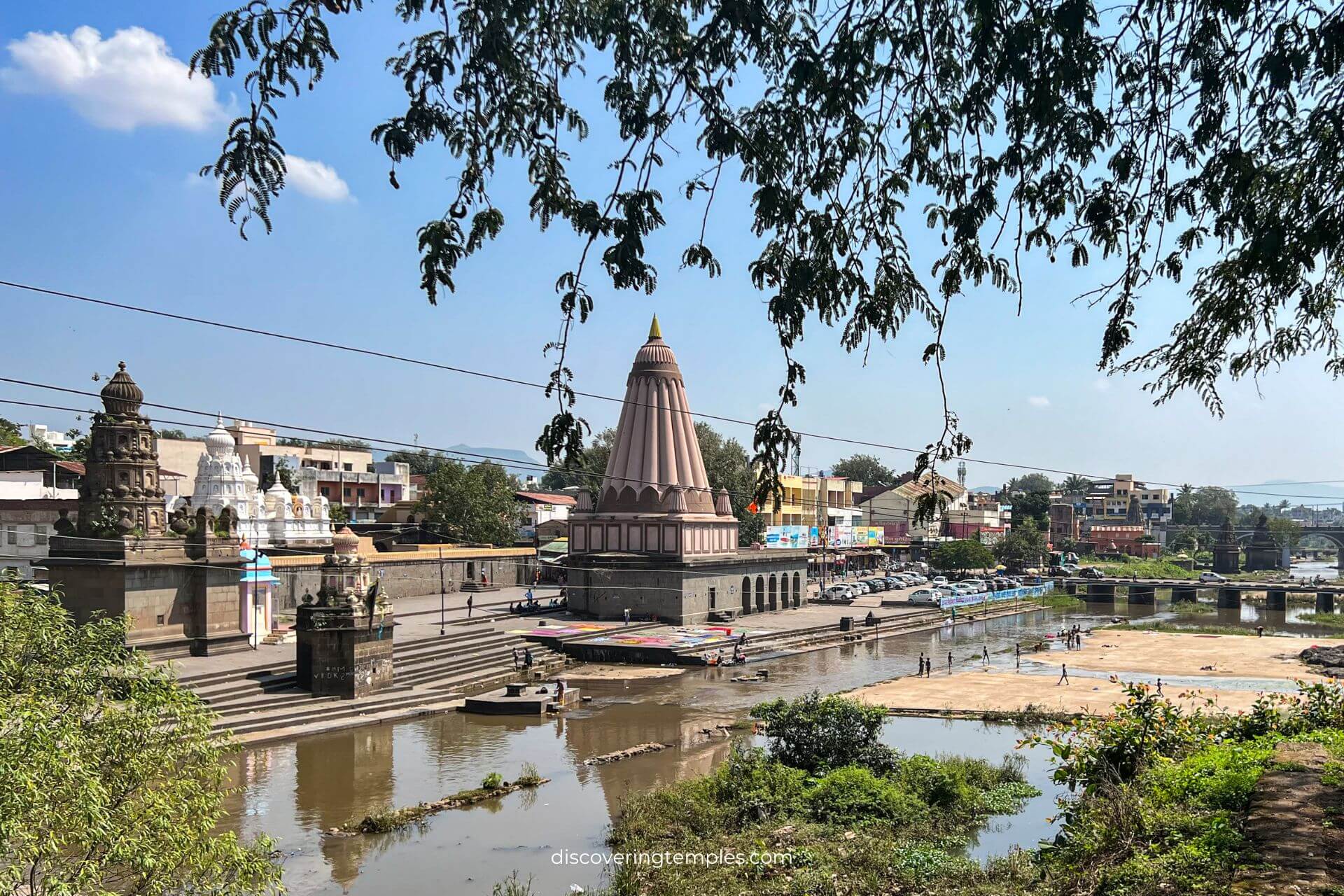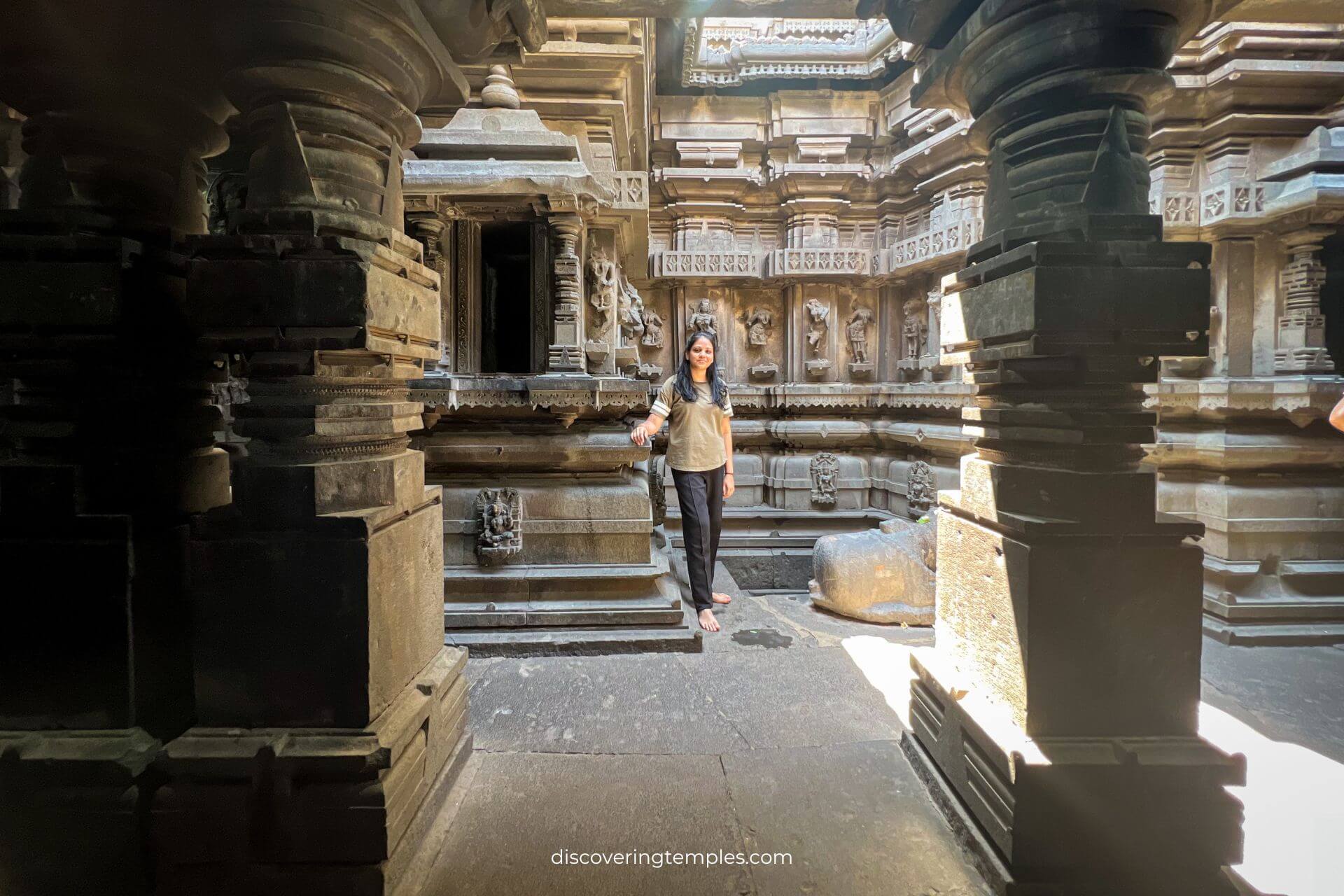Commonly known as the elephant-headed God among westerners, God Ganesha is a powerful and important deity in Hinduism. He has the most distinctive appearance with his large ears, small eyes, a curved trunk, a broken tusk, and a large belly. Ganesha symbolises wisdom, strength, and peace. It is believed that he destroys all problems and obstacles with his intelligence. In Hinduism, Ganesha is always worshipped first before any other deities. He is one of the Pancha Maha Devata – the 5 Main Hindu Gods, who must be worshipped on all auspicious occasions.
Ganesha has a spiritual and symbolic significance in Hinduism as follows –
- The God of Intelligence – Ganesha is recognised as the god of wisdom and intelligence. He is associated with a stable mind and clarity of thought. For this reason, he is worshipped by students, researchers, artists, writers, and intellectuals.
- Destroyer of Obstacles – Ganesha is called the Vighnaharta, which means ‘destroyer of obstacles.’ He is worshipped to ensure smooth progress towards your goal without any obstacles in your way.
- God of New Beginnings – Ganesha is worshipped before beginning new endeavours to ensure success and victory. He is also worshipped first before any auspicious ceremonies in the Hindu culture.
God Ganesha is often depicted as a lover of food and delicacies – he is a foodie! People usually offer sweets to God Ganesha to get his blessings. He is especially fond of Modak – a delicious treat made from steamed rice flour filled with an aromatic mixture of coconut and jaggery.
Who is God Ganesha?
In Hindu mythology, Ganesha is the son of Shiva and Parvati. The story of how Ganesha was born is itself extraordinary. As Goddess Parvati was preparing herself for a bath, Nandi was not there to guard her. So, she took the sandalwood paste and dirt from her body and sculpted a young boy out of it. She breathed life into this statue with her divine powers, creating her son Ganesha. She then instructed him to stand as a guard so that no one would disturb her while she had her bath.
Why is God Ganesha worshipped first? (as per Hindu Mythology)

When Shiva returned home, Ganesha was unaware that God Shiva is Parvati’s husband and hence his father. He blocked Shiva’s path as he was merely following Goddess Parvati’s instructions. Now, God Shiva, who wished to see his wife Parvati, was enraged by Ganesha. Shiva started a battle with the little boy and cut off his head. When Goddess Parvati discovered this, she was so enraged that she threatened to destroy the entire universe if her conditions were not met. She set down two important conditions –
1. The boy (Ganesha) should be brought to life, and,
2. He should forever be worshipped first before any other Gods.
God Shiva agreed to these two conditions. As the original head of Ganesha was not to be found now, God Shiva sent his devotees with instructions to bring the head of the first creature they find facing north. They returned with the head of an elephant called Gajasura. Then, God Brahma placed this elephant’s head on the little boy’s body and breathed life into him. Since then, God Ganesha has always been worshipped first before any other Gods.
In this story, the cutting off Ganesha’s human head signifies killing one’s ego self. And the moral is that you can achieve greatness and spiritual progress only after cutting off your egoistic side. When you stand in front of God Shiva with your ego, the first thing he does is kill your egoistic self.
Why is God Ganesha worshipped first? (as per modern Science)

As per modern science, your subconscious mind greatly influences your thoughts and behavioral patterns. But still, you cannot access or alter your subconscious mind directly at your will. Changing your thoughts in your conscious mind is the only way to change your subconscious mind. If you constantly choose positive thoughts and success in your mind, you will eventually create it in your reality.
In his popular book The Power of Your Subconscious Mind, a renowned psychologist Dr. Joseph Murphy writes that,
“When you set up obstacles, impediments, and delays in your conscious mind, you are denying the wisdom and intelligence residing in your subconscious mind. When you imagine the reality of your fulfilled desires and feel the thrill of accomplishment, in your conscious mind, your subconscious brings about the realization of that desire.”
For several centuries, this concept of choosing your thoughts to manifest your reality has been used in the worship of God Ganesha.
As per ancient Vedic knowledge, any thought or idea that enters your mind should be free from doubts and obstacles. If the idea enters your mind with doubts and obstacles, the same obstacles will manifest in your reality. But if you worship God Ganesha before starting any new idea, task, venture, or endeavor, your mind is freed from all the doubts, worries, and obstacles.
And when your conscious mind is free from all the worries and obstacles, your ideas and thoughts manifest in your reality effortlessly without any friction or obstacles. Worshiping God Ganesha is a powerful yet simple tool to change the negative destructive patterns in your subconscious mind and ensure a mind full of clarity and purpose.
God Ganesh Mantra

The most commonly chanted mantra to worship God Ganesha is Vakratunda Mahakaya. This mantra instantly clears all the negative energy surrounding you and brings self-confidence, positivity, and clear vision. It has its origins in the ancient Vedic period and is believed to have first appeared in the Mudgala Purana. Even today, it is commonly chanted in Maharashtra and other parts of India.
Ganesh Mantra
वक्रतुंड महाकाय सूर्यकोटि समप्रभ।
निर्विघ्नं कुरुमे देव सर्वकार्येषु सर्वदा।।
Vakra-Tunndda Maha-Kaaya Suurya-Kotti Samaprabha |
Nirvighnam Kuru Me Deva Sarva-Kaaryessu Sarvadaa ||
Meaning of this Mantra
(Salutations to God Ganesha)
The one who has a curved trunk, a large body, and whose brilliance is as bright as a million suns,
Oh God, please always remove all the obstacles in all my endeavors.
Benefits of chanting Ganesh Mantra: Clears mental blockages, increases self-awareness, and channels creativity.
God Ganesha governs the Muladhara Chakra (Root Chakra)
According to ancient Vedic knowledge, there are 7 most important chakras in the human body. From these, the Muladhara chakra (Root chakra) is the foundational energy centre in the human body. The word Mul adhara means ‘primary support.’ This chakra is located at the base of the spine in the human body.
It is the place where all spiritual energy is stored, and it is the force that connects us to the physical world. Any person’s spiritual awakening (Kundalini) begins from this chakra. A person will feel more secure, stable, and grounded by clearing blockages and balancing this chakra.
God Ganesha governs the Muladhara Chakra, and worshipping him helps you to clear blockages and harmonise this chakra. A well-balanced Muladhara Chakra assists you in enhancing your inner strength and confidence.
God Ganesha worshipped across the world

The worship of Ganesha is not just deeply rooted in Hinduism, but also found in several cultures worldwide. Ganesha is greatly worshipped in Buddhism, and his idols have been found inside many Buddhist monasteries across Tibet and China. In Indonesia, a 700-year-old idol of God Ganesha sits at the mouth of a volcano called Mt Bromo. The locals believe that Ganesha guards it and prevents volcanic eruptions. Several ancient Ganesha temples are still present in Nepal and Thailand. The Nepalese and Thais worship Ganesha as much as the Indians. Additionally, you will come across Ganesha inside several temples of Cambodia, including the famous Angkor Wat temple.
In Japan, an elephant-headed God known as Kangiten / Vinayakaten has been worshipped for thousands of years. Moreover, recently, an old sculpture of Ganesha was found in the ruins at Gardez near Kabul, Afghanistan. This sculpture is a classic example of Indo-Afghan artistry and shows us that Ganesha was also popular among Afghans at some point in time!
Ancient temples and idols of Ganesha are found not just in India but across the Asian continent. Finding Ganesha in Asian cultures is no wonder, but what’s astonishing is that Ganesha worship is also found in the ancient Aztec culture native to Central Mexico! The excavations in Mexico have revealed numerous ancient Ganesha idols. Yet another ancient Ganesha idol, carved in granite, was discovered in the artefacts found at Gympie district in Queensland, Australia. Now what does that tell you?
God Ganesha is not just native to India but has been adopted by different ancient cultures across the globe – from Mexico to Australia to Japan. Ganesha’s image transcends cultural and geographical boundaries. He is influenced and adapted to the local beliefs while retaining the core characteristics of his nature. His unique appearance with an elephant head and distinctive values – wisdom and protection from evil has a universal appeal worldwide.
Ganesh Chaturthi festival in India

Ganesh Chaturthi is a vibrant festival celebrated across India, marking the birth of God Ganesha. It was first started by Lokmanya Tilak in Pune City, India, to facilitate community bonding and devotion among the people. This festival is like a grand carnival that brings a lot of joy to everyone. For ten days, people bring beautifully crafted clay idols of Ganesha into their homes and neighbourhoods. They perform prayers, sing devotional songs, and organise cultural events. The entire community comes together, creating a festive atmosphere filled with music, dance, and delicious food. The festival ends with a grand procession, where the idols are taken to rivers or the sea and immersed in the water to symbolise Ganesha’s return to his celestial abode.




Ganpati Bappa Morya!!!!